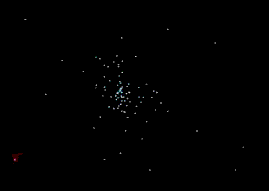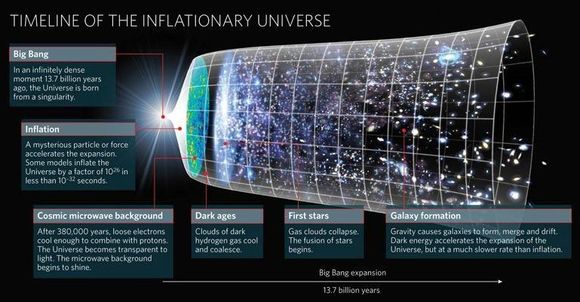 Prof Gibson is the Professor of Astrophysics director at the recently opened E.A Milne centre for Astrophysics in Hull. The centre was opened in 2015 and as Brad pointed out the centre is not named after the author of Winnie the Poo; AA Milne, but the distinguished astrophysicist and mathematician Edward Arthur Milne, who was born in Hull. Brad heads a research team who use supercomputer generated simulations to test, observational and theoretical predictions of galaxy formation and interactions, in particular spiral galaxies.
Prof Gibson is the Professor of Astrophysics director at the recently opened E.A Milne centre for Astrophysics in Hull. The centre was opened in 2015 and as Brad pointed out the centre is not named after the author of Winnie the Poo; AA Milne, but the distinguished astrophysicist and mathematician Edward Arthur Milne, who was born in Hull. Brad heads a research team who use supercomputer generated simulations to test, observational and theoretical predictions of galaxy formation and interactions, in particular spiral galaxies.
The supercomputer Prof Gibson and his colleagues use known as ‘Viper’, has 5500 cores. Brad explained how galaxy evolution simulation models are built by applying various factors; these are - initial conditions, laws of physics and known boundary conditions.
Prof Gibson demonstrated a simple simulation exercise by showing the dropped water block test. Here, 2 layers of water of different viscosity are initially separated. The initial condition is the elevated water, the ‘Physics’ ie gravity – is viscosity and the boundary conditions are set by the container itself. Once the segregation boundary is removed the liquids mix in a certain fashion. Early simulations were based on data accumulated from such tests. These in turn led to more complex modelling, for example dam break simulations and the spread of flu pandemics are all now tested using simulations.
Prof Gibson then talked in some detail on simulation factor parameters. The physics of galaxies, he suggested, began with William Parsons and the Leviathan at Birr Castle-Ireland, the great 72inch reflector completed in 1845. With this instrument the nebulous nature of spiral galaxies was first resolved as structure. As larger instruments entered service in the early 20th century, coupled with the use of astrophotography, an understanding of galactic structures began to take shape.

A really simple N-Body simulation: a
technique now being use to re-create the
Universe, primarily from the most basic rule
of gravity: that from double the distance it's
four times as weak.
Prof Gibson then turned to the role N-Body simulation and the inverse square law play, both crucial modelling factors. An N-Body simulation is a simulation of a dynamical system of particles, usually under the influence of physical forces such as gravity, they are widely used tools in astrophysics in understanding the evolution of the large-scale structures, like galaxies. N-Body simulations were first used in 1941, predating computers.
Most important for simulations is the role played the inverse-square law plays. This relates to any physical law where a specified physical quantity, or intensity, is inversely proportional to the square of the distance from the source of that physical quantity. When applied to Gravitation: the attraction force of two objects with mass, it is directly proportional to the product of their masses and inversely proportional to the square of their separation distance. Gravitation was first suggested in 1645 by Ismaël Bullialdus and expounded upon in 1666 by Robert Hooke. A third major component of the ‘Physics’ aspect of simulation modelling is Smoothed-particle hydrodynamics (SPH); a computational method used for simulating the dynamics of continuum media, such as fluid flows. Developed in the mid-seventies, it is especially useful for astrophysical problems.
Prof Gibson then briefly covered the ‘initial conditions factor’ which really stem from Cosmic Microwave Background data, he then played a clip of the universe in 30secs and showed a 3D funnel diagram of the Big Bang.

When all these factors are combined and applied in the correct percentages, (which for galaxy structure interactions, results in a ratio of the laws of fluid dynamics to the inverse square law of 15% to 85% respectively) and then run as simulations, the results yielded thick bulgy galaxies, obviously not what we observe. Some other refinement was required, one to inhibit material spiralling into the centre of the galaxy and piling up. The ‘refinement’ turned out to be supernova, an energy source which heats up the gases spiralling into the centre and pushes it outwards. In our galaxies 10 billion year history, upwards of 100 million supernova have provided an awful lot of energy to ensure this happens.
It is only the last 5 years that supercomputer simulations have started to closely match observed data and images. This has led analytical studies of simulations – where specific questions may be answered by inputting factors. Kinematics, chemistry, structure. For instance – where would you find rocky planets and possibly life? Well you would start by looking in the galactic habitable zone, where metals were more abundant but also away from supernova. Where do we find mineralogical building blocks – similar to those on earth. Simulations generated by super computer could actually point us in the general (or even more specific) direction.
In summary Prof Gibson suggested we should not be wary of simulations, they behave well at large scales, but improvement is required on smaller scales. Future refinements will factor in dust and magnetism influences giving more complex and detailed simulations. Certainly a field to watch in the future.
- Log in to post comments
